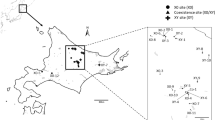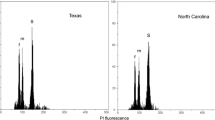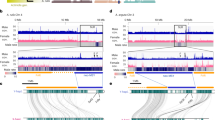Abstract
Helicophyllum crassipes (Araceæ)1 grows as a weed in the coastal belt of Egypt, in localities where the soil is light calcareous sand and where the percentage of salt is low. It is a corm-geophyte which sprouts late in October and flowers during January and February; flowering sometimes extends through March and April. The plant seems to possess a high capacity for seed production.
This is a preview of subscription content, access via your institution
Access options
Subscribe to this journal
Receive 51 print issues and online access
$199.00 per year
only $3.90 per issue
Buy this article
- Purchase on Springer Link
- Instant access to full article PDF
Prices may be subject to local taxes which are calculated during checkout
Similar content being viewed by others
References
“A Manual Flora of Egypt”, 1 (Berlin, R. Friedlaender und Sohn, 1912).
Tjio, J. H., and Levan, A., An. Estac. Exp. De Aula Dei, Spain, 2 (1) (1950).
Author information
Authors and Affiliations
Rights and permissions
About this article
Cite this article
LOTFY, T. Chromosome Number and Chromosome Morphology in Helicophyllum crassipes. Nature 168, 338–339 (1951). https://doi.org/10.1038/168338a0
Issue Date:
DOI: https://doi.org/10.1038/168338a0
Comments
By submitting a comment you agree to abide by our Terms and Community Guidelines. If you find something abusive or that does not comply with our terms or guidelines please flag it as inappropriate.



